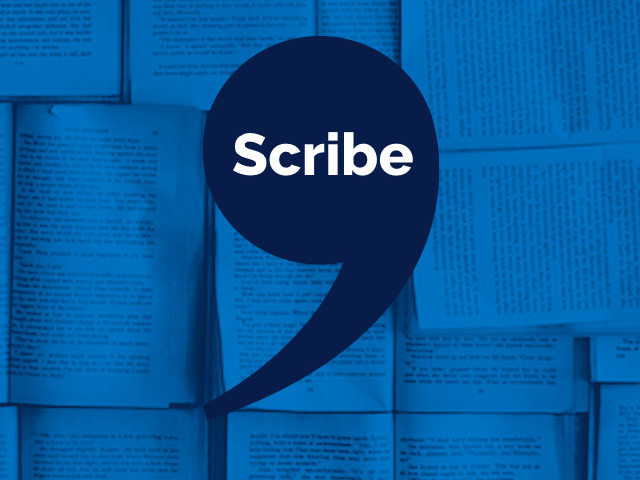“In this class, I’m making a case for doing more, for making a readily visualized scene, however well-written, more palpable with the addition of details from some, if not all, the other senses…Providing readers with an array of sensory details places them more solidly in the world you’ve evoked solely with words.”
-Marian Szczepanski
Marian Szczepanski, author of the debut novel Playing St. Barbara (High Hill Press, 2013), holds an MFA in fiction from the Program for Writers at Warren Wilson College and a BA in American Studies from the University of Notre Dame. Her short fiction has garnered the deMaine Award for an Emerging Writer from Clackamas Literary Review. She has received fellowships, grants, and awards from Hedgebrook, Vermont Studio Center, the Writers’ Colony at Dairy Hollow, and the Houston Press Club. Named to the Houston Press roster of “100 Houston Creatives” for 2014, Marian teaches creative writing workshops in Houston at Writespace and beyond.
Marian is teaching a class for the Writers’ League of Texas called “More Than Meets the Eye: Writing the Four Other Senses” on Saturday, September 10 at St. Edward’s University in Austin, TX. In this class, students learn how to captivate readers with concrete details. Characters, like readers, have four sense beyond sight, and each one offers the writer countless opportunities to render those characters’ experiences more vividly. Read the interview below and visit the class page to learn more.
 Scribe: The class will give strategies for writing descriptions that move beyond the sense of sight–how things look. This sounds like an obvious thing a writer ought to do, and yet it can be surprisingly difficult. Why do you think writers tend to rely on the sense of sight?
Scribe: The class will give strategies for writing descriptions that move beyond the sense of sight–how things look. This sounds like an obvious thing a writer ought to do, and yet it can be surprisingly difficult. Why do you think writers tend to rely on the sense of sight?
Marian Szczepanski: Sight is by far the sense we rely on the most—if we’re not visually compromised in some way that forces us to rely on the other four. If we, as writers, can render a scene readers can readily visualize—clearly “seeing” in their minds’ eyes—we feel as if we’ve done our jobs. In this class, however, I’m making a case for doing more, for making a readily visualized scene, however well-written, more palpable with the addition of details from some, if not all, the other senses. Imagine the difference between watching a cooking show with the sound turned off and sitting in the kitchen with the cook (or cooking yourself). In the first case, you can see what’s going on, but you may not be familiar with all the ingredients being used or the cooking methods. You can’t hear the sizzle of oil in a skillet or the sound of a knife chopping onions on a wooden cutting board or smell the heated oil or feel the sting as your eyes react to the onions’ fumes. If you’re the cook, you may also be aware of the moist, sticky onion against your fingertips and, if you’re an accident-prone cook like me, the sharp burn when the knife slips and slices your thumb. Providing readers with an array of sensory details places them more solidly in the world you’ve evoked solely with words.
Scribe: Is writing the other senses simply a matter of describing, say, a smell or sound? Or is more required than a sentence like “I could smell the roses”?
MS: Describing sensory impressions can be tough. It’s challenging to come up with the right analogy or metaphor that nails a certain smell or sound. I don’t think there’s a specific prescription for rendering sensory material. The writer’s style and the demands of the narrative drive the way in which s/he handles it. We’ll discuss “how much is too much” when it comes to sensory input, as well as the most effective and creative ways to render it. Sometimes all it takes is one perfectly evocative word. Lauren Groff does this over and over in her novel Fates and Furies.
Scribe: In the class, you’ll be discussing a lot of great writers, including Lily King, Michael Ondaatje, Anthony Doerr, Chitra Divakaruni and Lauren Groff. Is there one particular trait these writers possess–or one particular book that you return to–for great writing about the five senses?
MS: I culled examples from a wide range of writers, but I kept coming back to Fates and Furies. Groff’s style is like nothing I’ve read before, and she excels at one-word sensory metaphors. Anthony Doerr’s novel WWII novel All the Light We Cannot See is a close second, in large part because Marie-Laure, a primary character, is blind. His narrator is omniscient, so he’s free to dispense plenty of visual detail, but when focusing on Marie-Laure, the other senses kick into high gear. We’ll do a brief experiential exercise to help us key into non-visual stimuli and use them in our own work.
Scribe: When you’re working on your own material, do you tend to write from all five senses from the beginning? Or is it something you add through revision?
MS: Sometimes you need to get a draft done before you fully grasp who your characters are and what is at the heart of your story. Then you can approach the second draft with the intention of fleshing out scenes that may have been lightly sketched, adding appropriate sensory details. I go back and forth. I’m a compulsive editor, so I’m constantly scrolling back and tinkering with what immediately came before the scene I’m working on. Sometimes a scene will demand I focus on sensory detail in the first draft. Scenes with highly dramatic content or rising conflict can sharpen characters’ senses. Any scene involving a threat, either from another character or a natural disaster, upends the normal order and thrusts characters into a situation in which they have to make life-or-death decisions, often swiftly, relying on instinct and sensory input as much as intelligence. Characters will key into certain senses at different times, with emotions contributing to this selectivity. We’ll do an exercise examining emotions’ effect on the senses.
Scribe: Your novel, Playing St. Barbara, is about a 1928 coal miner strike, which means its set in a world and contains details (such as coal-products like coke) that not a lot of readers have experienced firsthand. Does that make creating a palpable fictional world that much more important? Is the bar higher for fiction when the readers can’t fill in the blanks based on their own experience?
MS: My goal was to render my novel’s world so vividly readers would feel coke cinders crunch between their teeth. It took nine years of meticulous (some might say “obsessive”) research and rewrites to accomplish this. That said, writers with contemporary settings face much the same challenge. They may not have to send their readers back in time, but they are inviting them to hang out in an imaginary space with imaginary people. Every setting, however mundane, must be created in palpable terms to make it come to life in a reader’s mind. In some ways, rendering a 21st-century suburban kitchen can be a bigger challenge than a 1933 coke yard. How to make that particular kitchen distinctive and yet familiar? And what senses would that particular kitchen evoke in any given character? Fantasy and dystopian fiction writers may have the toughest challenge of all: creating a world from scratch. Even if many of my readers had never visited a mining town, they probably have a sense of what such a town may be like. Not so with speculative fiction’s readers. They’re stepping into a setting they have absolutely no personal connection to or experience with, so they’re depending solely on the writer’s words to take—and keep—them there.
—
Thanks, Marian!
Click here to register for Marian’s class.
Click here for our current class schedule.









